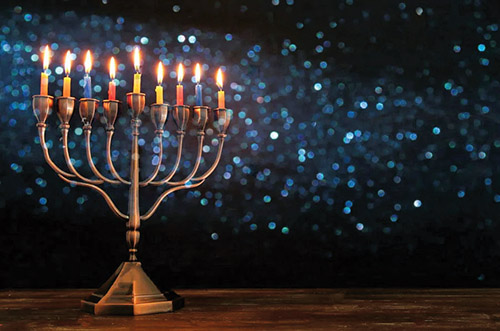
There are no coincidences in Jewish life. Our reading the stories of Yosef and his brothers on Shabbat Chanukah is not an accident. We believe that the Kri’at HaTorah of Shabbat Chanukah hints at Chanukah’s hidden dark side.
Sadly, the Hasmonean revolt against the Syrian-Greeks involved a bitter civil war. The Maccabim battled not only the Yevanim but also the Mityavnim, the Jews who chose to assimilate into Greek culture. This tragic but unavoidable confrontation is echoed by the fight between Yosef and his brothers. The painful parallels between these horrifying events are too miserable for us to articulate. It is therefore reduced to a subtle hint.
The daily Torah reading for Chanukah, however, alludes to the end of this conflict. Each day of Chanukah we read of the identical Mishkan donations during its inaugural 12 days by the Nasi/head of each Shevet. The lengthy and detailed description of the offering of each Nasi is striking.
Every student of the Torah is keenly aware of its economy of words. The Torah presents stories and mitzvot in a stunningly compact form. Accordingly, we expect that instead of spelling out the donations of each tribal head, the Torah would list the contributions of the first Nasi, Nachshon ben Aminadav of Yehuda, and then note that each of the 12 leaders of the Shevatim made the same donations.
The Ramban (Bamidbar 7:12-17) offers two explanations of the Torah’s unusual departure from its signature terse style. The Ramban begins with a straightforward pshat explanation that a shorthand reference to the offerings of the last 11 Nesi’im would be insulting.
Ramban then shares a magnificent midrashic approach. The Midrash explains that while the donations appear the same on the surface, each offering is unique. Each Nasi had different intentions and unique style with his gift.
This Midrash applies equally to us. While we, technically speaking, are saying the identical tefillah, each of us has his and her distinctive kavanot and means of expression that mark our prayers as one of a kind. While an unfamiliar observer might think everyone’s tefillah is the same, Hashem views each of our tefillot as different, despite everyone reciting the same words. We may be each lighting the same numbers of Chanukah lights each night, but everyone brings his personality to the mitzvah and shapes it as his own.
We set forth a third explanation applying the concept of tikkun. This term refers to later generations correcting their ancestors’ missteps. The harmonious and non-competitive nature of the Nesi’im’s donations contrasts sharply with the contentious competition between Kayin and Hevel regarding the korbanot they offered to Hashem. The 12 tribal leaders’ team spirit serves as a tikkun to the unhealthy relationship between Kayin and Hevel.
More important is that the brother Shevatim during the Chanukat HaMizbei’ach of the Mishkan did not try to outdo each other. They eschewed and thoroughly rejected the unhealthy competition between Yosef and his brothers. The unified spirit at the Chanukat HaMizbei’ah of the Mishkan rectifies the past’s terrible mistakes.
When we hear throughout Chanukah of the repetition of the identical gifts offered by each Shevet, the Torah reinforces its celebration of healthy teamwork in the Jewish community. It might even allude to the eventual rapprochement amongst our people when we emerged triumphant against the Syrian-Greeks. Chanukah’s dark side, alluded to in its Shabbat reading, finds its correction in its daily Torah portions.
We can do our part in correcting tragic divisions amongst our people. Chanukah’s Torah reading emphasizes the great joy Hashem experiences when we try to unify Hashem’s special children. Just as parents rejoice when witnessing a loving connection between siblings, Avinu Shebashayim is ecstatic when we work together as a unified people. The subtle allusions to the dark side of Chanukah serve as a sober reminder to make every effort to promote brotherhood and love amongst our people.
Rabbi Haim Jachter is the spiritual leader of Congregation Shaarei Orah, the Sephardic Congregation of Teaneck. He also serves as a rebbe at Torah Academy of Bergen County and a dayan on the Beth Din of Elizabeth.













